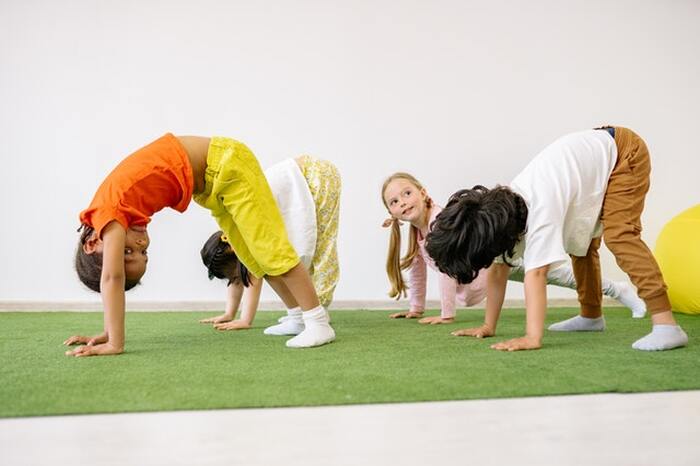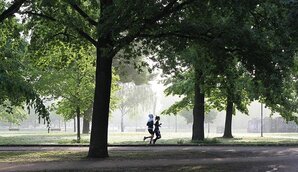The Impact of Varying Exercise Intensity on Children with ADHD
Attention-deficit/hyperactivity disorder (ADHD) is the most common neurodevelopmental disorder in children, affecting an estimated 9.4% of American children. Children with ADHD may have difficulty focusing and paying attention, act without thinking of the result, or be overly active. ADHD can cause issues at school, at home, or with friends. However, ADHD can be managed, and research continues to be conducted on the most effective treatments.
The most commonly prescribed medications for ADHD are stimulant drugs that increase and balance levels of chemicals in the brain called neurotransmitters. But while medication is extremely effective for many children, some experience unfavorable side effects such as a loss of appetite or problems sleeping. In a recent study of 183 parents whose children had ADHD, approximately 71% of the parents favored non-medication treatment options. Many parents chose psychosocial treatments as an alternative to medication, but these behavioral interventions require significant time commitment and can be expensive. Because of these factors, it is important to evaluate alternative treatments for ADHD, such as exercise.
Previous studies have shown that exercise enhances mental health and cognitive performance in children with ADHD, but some of this research is contradictory and is overall inconclusive. Studies suggest that exercise can treat ADHD because it increases blood flow to the brain, strengthens blood vessels, and increases activity in brain regions related to executive function. One recent study attempted to determine which exercise conditions improve mental health the most in children with ADHD. It evaluated whether exercise-induced effects vary depending on the intensity of exercise. Yoga and walking are examples of low intensity exercise, while sprinting and interval training are examples of high intensity exercise.
The most commonly prescribed medications for ADHD are stimulant drugs that increase and balance levels of chemicals in the brain called neurotransmitters. But while medication is extremely effective for many children, some experience unfavorable side effects such as a loss of appetite or problems sleeping. In a recent study of 183 parents whose children had ADHD, approximately 71% of the parents favored non-medication treatment options. Many parents chose psychosocial treatments as an alternative to medication, but these behavioral interventions require significant time commitment and can be expensive. Because of these factors, it is important to evaluate alternative treatments for ADHD, such as exercise.
Previous studies have shown that exercise enhances mental health and cognitive performance in children with ADHD, but some of this research is contradictory and is overall inconclusive. Studies suggest that exercise can treat ADHD because it increases blood flow to the brain, strengthens blood vessels, and increases activity in brain regions related to executive function. One recent study attempted to determine which exercise conditions improve mental health the most in children with ADHD. It evaluated whether exercise-induced effects vary depending on the intensity of exercise. Yoga and walking are examples of low intensity exercise, while sprinting and interval training are examples of high intensity exercise.
Image Source: Yan Krukov
The study evaluated 130 children (78 with ADHD and 52 without) between the ages of 6–13 over a period of three weeks during a summer camp. The children participated in daily exercise for 15 days total, alternating between low intensity and high intensity exercise each day. The high intensity exercises were 25 minutes long and consisted of bursts of aerobic and anaerobic activity. After reaching up to 80–90% of their maximum heart rate for a few minutes, the children rested for two minutes before repeating the burst of exercise. During the low intensity exercises, the children would reach 50–75% of their maximum heart rate for a few minutes, and then take a break before repeating the low intensity exercise. Before and after each exercise session, the children completed various measures: questionnaires on their mood, a task to assess their academic performance, and observation of their classroom behavior by camp counselors throughout the day.
The researchers found no significant differences in the effectiveness of low intensity versus high intensity exercise for children—regardless of if they had ADHD—on overall mood, behavior, or academic productivity. However, they did find that children with ADHD had more behavioral problems after high intensity exercise. These results may be important in developing physical exercise curriculum in schools for children with ADHD. This study had various limitations: it was conducted in a summer camp as opposed to a controlled lab environment, there was no control group that did not exercise, the same group of children completed both high and low intensity exercise on alternating days, and the intensity of exercise was difficult to control. Additionally, camp counselors’ use of group versus individual exercises may have confounded results, and the study was conducted within a relatively short time frame of three weeks. Future research should aim to further assess the possibility of exercise as a treatment for ADHD, with the ultimate goal of developing a physical exercise curriculum that is beneficial to mental health.
The researchers found no significant differences in the effectiveness of low intensity versus high intensity exercise for children—regardless of if they had ADHD—on overall mood, behavior, or academic productivity. However, they did find that children with ADHD had more behavioral problems after high intensity exercise. These results may be important in developing physical exercise curriculum in schools for children with ADHD. This study had various limitations: it was conducted in a summer camp as opposed to a controlled lab environment, there was no control group that did not exercise, the same group of children completed both high and low intensity exercise on alternating days, and the intensity of exercise was difficult to control. Additionally, camp counselors’ use of group versus individual exercises may have confounded results, and the study was conducted within a relatively short time frame of three weeks. Future research should aim to further assess the possibility of exercise as a treatment for ADHD, with the ultimate goal of developing a physical exercise curriculum that is beneficial to mental health.
Featured Image Source: Mary Taylor
RELATED ARTICLES
|
Vertical Divider
|
Vertical Divider
|
Vertical Divider
|






